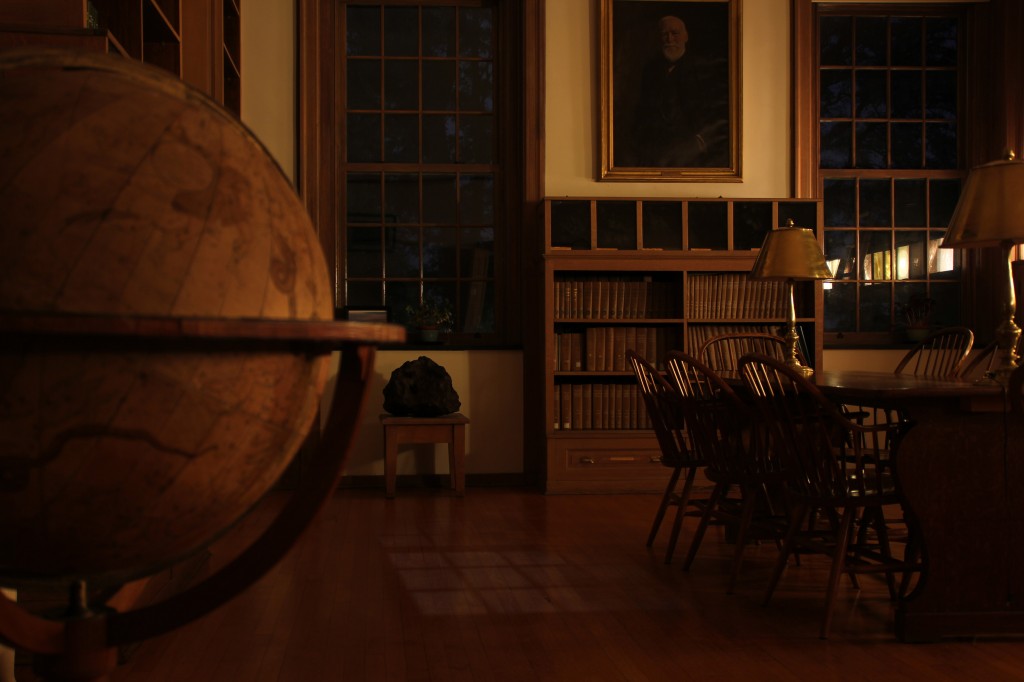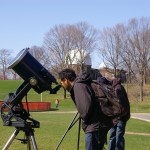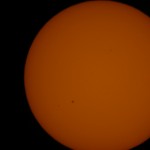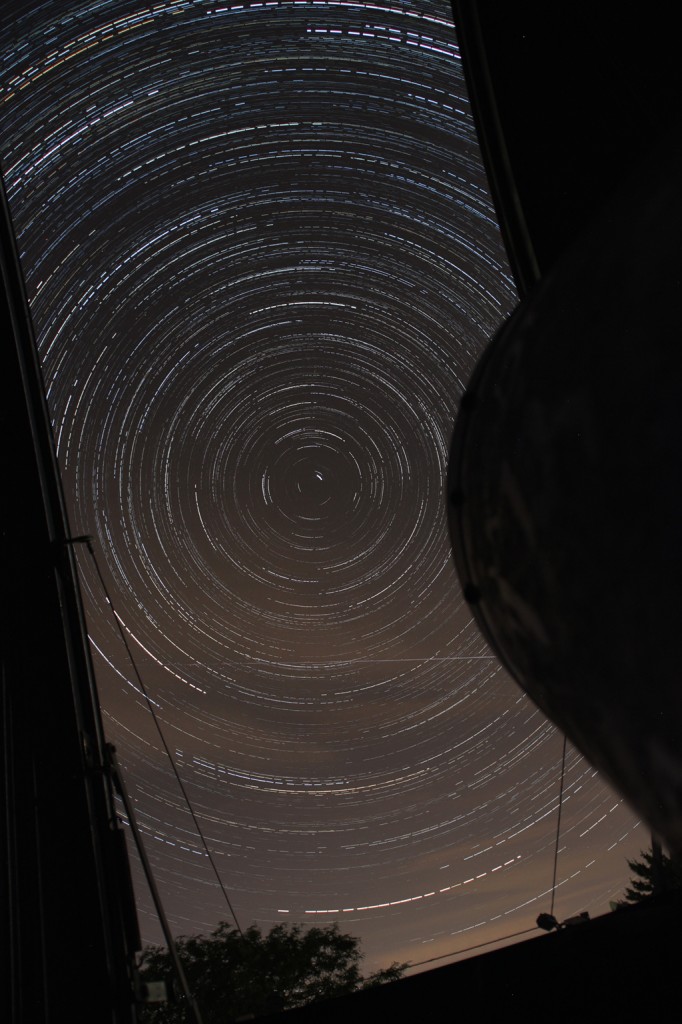A note: Just as the plans of mice are wont to do, so too have my own to post an astronomy picture every week gone awry. I therefore am changing this to Astronomy Pictures of Whenever, allowing more freedom in when they can be posted as well as retaining the fetching acronym APOW.

We have here a view of the Van Vleck Observatory library at night. Taken around the end of August 2011 there are many things astronomical to see. How many can you find?
Starting on the left we can see a celestial globe displaying the positions of stars and constellations for the year 1800. You can get a better feel for what this is showing by imagining that the Earth is inside the center of this globe and you are looking outward at these constellations. You can see in the upper right portion the constellation Boötes, the herdsman (by his right arm is the label for this celestial globe: “Cary’s New and Improved Celestial Globe”). To his right is Serpens Caput, the head of the snake with which Ophiuchus (unseen) wrestles. In the bottom portion can be seen the tail of Hydra, the sea serpent which Hercules was tasked to kill.
In the distance just to the right of the celestial globe can be seen part of a 150ft wide, 60-million pound meteor which slammed into Earth approximately 50,000 years ago forming the 1-mile wide Barringer “Meteor” Crater in Arizona . This roughly one cubic-foot, nickel-iron meteorite chunk weighs an impressive 370lbs!
Splayed on the floor in front of the meteorite we have moonlight streaming in through the window. Hearkening back to the previous APOW (‘Star trails’), if you were to watch this moonlight for even a few minutes you would notice its movement across the floor caused by Earth’s gentle rotation.
Reflected in the far right window can be seen 20th century photographic plates of celestial objects taken at various different observatories, including our own. In the window pane furthest to the right can be seen an image of the Andromeda galaxy (née ‘Andromeda Nebula’). The light we see from the Andromeda galaxy left around the time when primitive humans were first fashioning stone tools and our current species was no where close to existing. Over the intervening few (~2) million years our current species evolved, we domesticated plants and animals, invented writing and spread across most of the world. During all this time the light from Andromeda was still hurtling towards us through space. The Ancient Egyptians, Greeks and Romans came and went; the Pyramids, Parthenon and Colosseum were built. The light was still chugging along. Bill Shakespeare wrote sonnets and some plays; Galileo pointed a telescope at the night sky, then got in trouble; Newton took a sick day and invented calculus, discovered fundamental laws of motion. The light, still cruising along at 67 million mph, was now within the bounds of our Galaxy. The United States was founded, split and reformed. The light, well outside our solar system, was still further than even the nearest stars. Then one clear night, likely in the second half of the 20th century, an observer at the Yerkes Observatory in Wisconsin decided to turn their 24-inch reflecting telescope (the same size and model as our very own) towards the Andromeda galaxy for 4.5 hours. The light (photons), after their many millions of light-years journey from Andromeda, ended by being absorbed in the atoms and molecules of a curious astronomer’s photographic plate. The light having traveled so long that a species was able to evolve, invent tools, and create a state decidedly the shape of Wisconsin, such that an observer could ‘trap’ these photons on a plate of chemicals at the end of a tube of mirrors, instead of having their journey be all for naught by bouncing off the observatory’s roof.
To the left of the reflected photos we see the portrait of our observatory’s namesake: John Monroe Van Vleck, head of Wesleyan’s Department of Mathematics and Astronomy in the mid-1800s. Underneath him are photographic plates (unlit) showing the bountiful starfields visible in our own Milky Way Galaxy, you’ll have to come see them for yourself; below the plates are more than 50 years worth of astronomical research journals.
So with that, and under the watchful gaze of J.M. Van Vleck, we end our astronomical tour of this delightful little library. Adieu.







